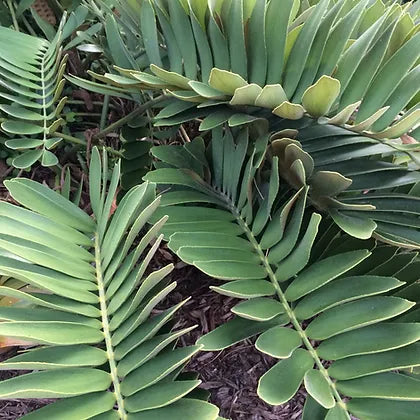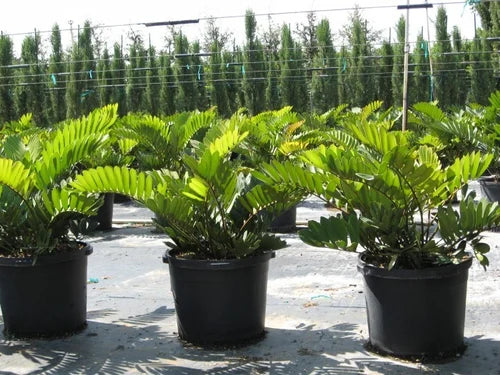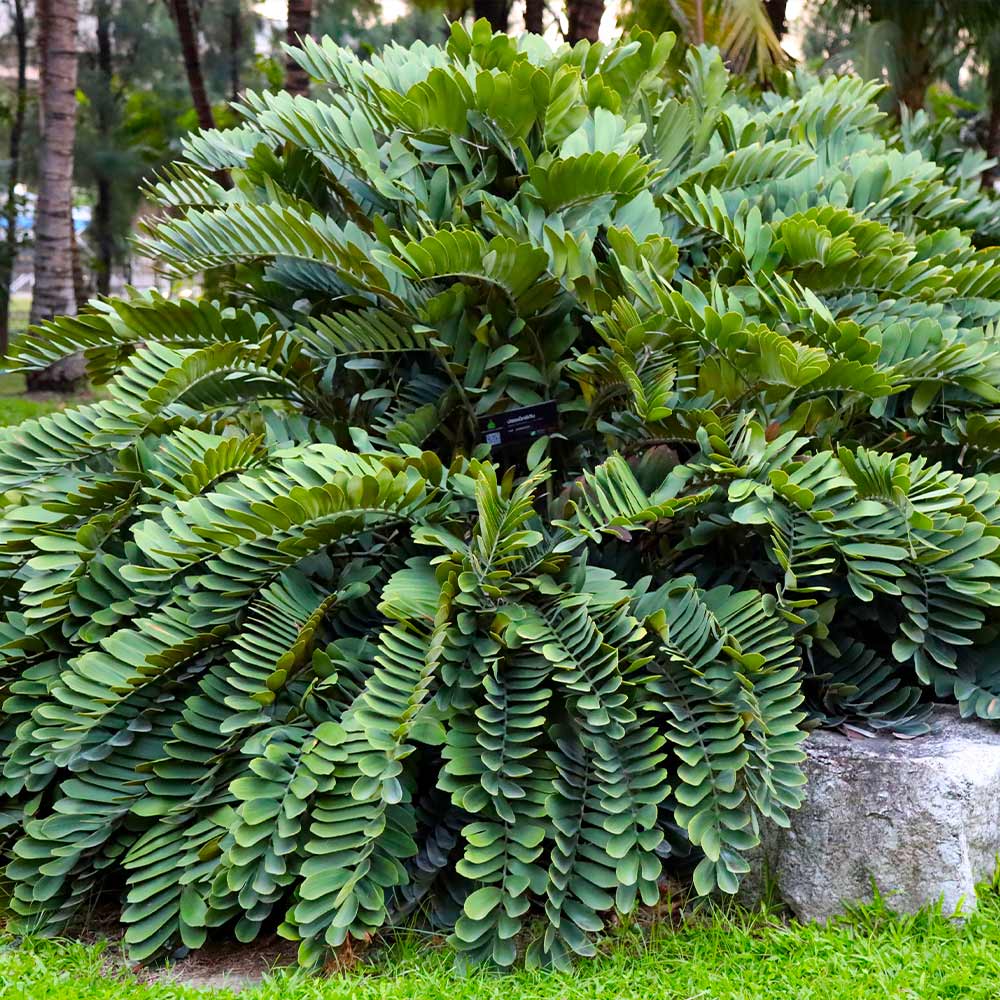
Delivery & Installation
-

Use code DBD and get 10% on entire delivery ONLY orders (1-3 Days)* Discount not Good with Installed orders Minimum order $150
-
$250.00 + FREE delivery & Installation
All orders of $250.00 and more qualify you for FREE delivery & Installation (Hillsborough, Pinellas, Manatee and Pasco Counties ONLY)
Plant It Tampa Bay
Cardboard Palm
Couldn't load pickup availability
Overview
 |
Advantages:
|
 |
Grows Best:Landscape House Plant Container |
 |
Ideal position:Full Sun 6 + Hours best |
|
|
Growth Outlook:Height : 2-3 ft Indoors Wide: 3-4 ft Indoors Growth Rate: Slow Plant Spacing: 12" - 18" |
 |
Pet Friendly - No
|
Description
Cardboard Palm
The Cardboard Palm, scientifically known as Zamia furfuracea, is a unique and captivating plant that adds a touch of tropical beauty to any landscape. Despite its name, it's not a true palm but a cycad, a group of seed plants whose lineage dates back to prehistoric times.
The Cardboard Palm gets its name from the unusual texture of its leaves, which feel like cardboard to the touch. This plant is a visual delight, with its thick, woody trunk and large, fern-like leaves that fan out to create a striking silhouette. The leaves are a vibrant green color, providing a lush contrast to the brown trunk.
One of the most distinctive features of the Cardboard Palm is its growth habit. It grows slowly and remains relatively small, making it an excellent choice for indoor gardening or for use in smaller outdoor spaces. Despite its compact size, it makes a big impact, thanks to its bold, architectural shape and the visual interest provided by its textured leaves.
The Cardboard Palm is not just beautiful but also hardy. It's highly resistant to pests and diseases and can tolerate a range of soil conditions, making it a low-maintenance choice for both novice and experienced gardeners. It prefers a sunny or partially shaded location and well-drained soil.
In terms of watering, the Cardboard Palm is drought-tolerant once established, but it appreciates regular watering during the growing season. It's also a good idea to feed it with a slow-release fertilizer during this time to support its growth.
One thing to note about the Cardboard Palm is that all parts of the plant are toxic if ingested, so it's important to keep it out of reach of children and pets.
In conclusion, the Cardboard Palm is a fascinating plant that offers a combination of visual appeal, hardiness, and low-maintenance care requirements. Whether you're looking to add a tropical touch to your indoor space or create a stunning focal point in your outdoor garden, the Cardboard Palm is a choice that's sure to impress.
- The Cardboard Palm, scientifically known as Zamia furfuracea, is a unique cycad plant with a distinctive cardboard-like texture to its leaves.
- It features a thick, woody trunk and large, fern-like leaves that fan out, creating a visually striking silhouette.
- The plant remains relatively small, making it suitable for indoor gardening or smaller outdoor spaces.
- The Cardboard Palm is highly resistant to pests and diseases and can tolerate a range of soil conditions, making it a low-maintenance choice for gardeners.
- It prefers a sunny or partially shaded location, well-drained soil, and appreciates regular watering during the growing season.
Caring For
 |
 |
 |
 |
| Position | Water | Temps | Food |
Caring for a Cardboard Palm tree (Zamia furfuracea) involves several important steps to ensure its health and growth:
1. Sunlight: Cardboard Palms thrive in bright, indirect light. They can tolerate some direct sunlight, but too much can scorch the leaves. Place your palm in a location that receives partial shade or filtered sunlight.
2. Watering: Cardboard Palms are drought-tolerant and prefer to dry out between waterings. Water your palm deeply and thoroughly, allowing the top few inches of soil to dry out before watering again. Avoid overwatering, as it can lead to root rot.
3. Soil: Cardboard Palms prefer well-draining soil. Use a well-draining potting mix or amend the soil with sand or perlite to improve drainage. Avoid heavy or clay-like soils that can retain too much moisture.
4. Fertilization: Feed your Cardboard Palm with a balanced, slow-release fertilizer formulated for palm trees. Apply the fertilizer according to the package instructions, usually once every three to four months during the growing season (spring and summer).
5. Pruning: Remove any dead or yellowing leaves as they age or become damaged. Trim off any brown leaf tips to maintain the plant's appearance. Avoid excessive pruning, as it can stress the palm.
6. Pests: Monitor your Cardboard Palm for common pests like scale insects and mealybugs. If you notice any infestations, treat them promptly with an appropriate insecticidal soap or neem oil spray.
7. Cold Protection: Cardboard Palms are sensitive to cold temperatures and should be protected from frost. If you live in a region with occasional cold snaps, cover the palm with frost cloth or bring it indoors during extreme cold spells.
By following these care guidelines, you can ensure that your Cardboard Palm remains healthy, vibrant, and a beautiful addition to your indoor or outdoor space. Regular attention to watering, light, and proper drainage will help your palm thrive for years to come.
Share












